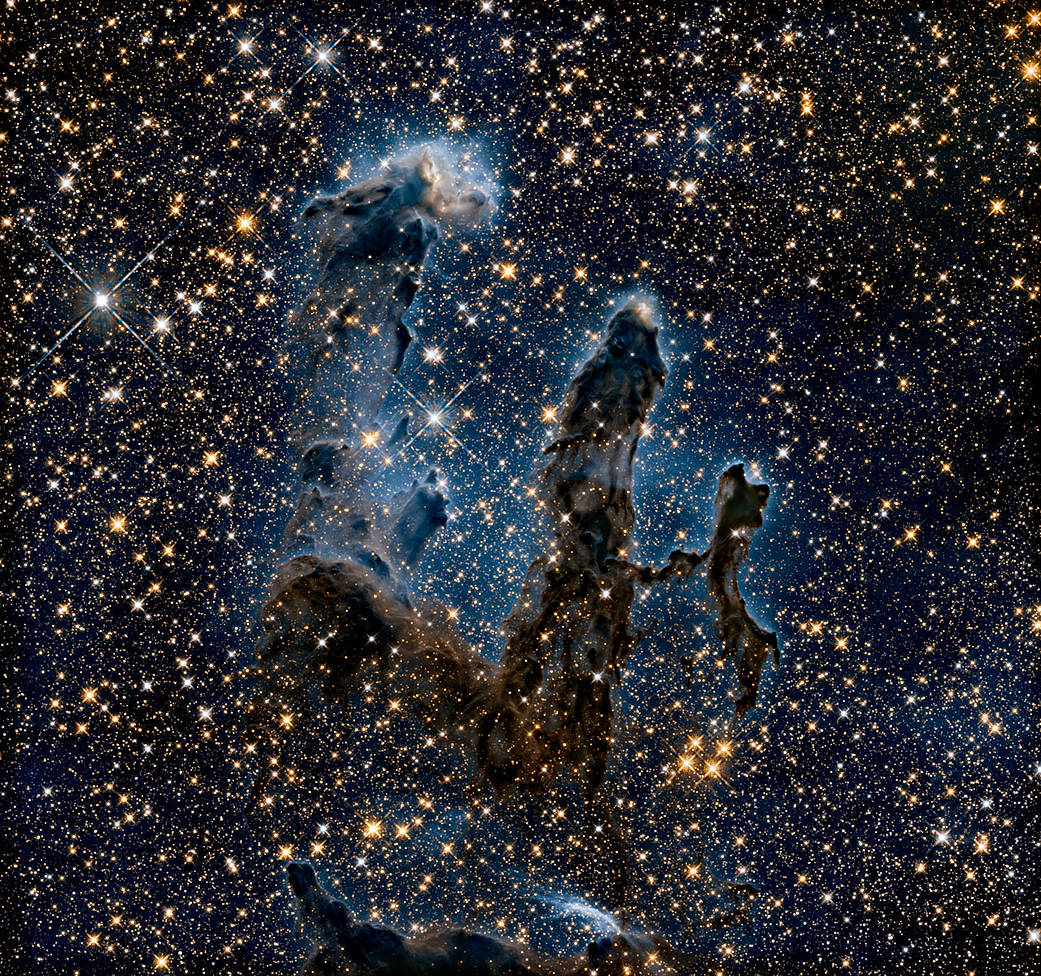Behold! See the Hubble telescope's iconic 'Pillars of Creation' view in infrared

Scientists have revisited one of the most iconic images taken with the Hubble Space Telescope, revealing incredible details in infrared light.
The image, dubbed the "Pillars of Creation" in the Eagle Nebula, was taken by Hubble in 1995. The elephant trunk-shaped features in this iconic Hubble image are star-forming regions made up of incredible, monolithic structures of interstellar dust and gas.
This region is located about 6,500 to 7,000 light-years from Earth and is part of the larger region known as the Eagle Nebula, which is a stellar nursery in the constellation Serpens. While the "pillars" stretch about 4 to 5 light-years long, the Eagle Nebula spans a vast 55-70 light-years.
Related: The most amazing Hubble Space Telescope discoveries
More: Another breathtaking Hubble view of the Pillars Of Creation
The famous image of the "Pillars of Creation," which NASA originally released in 1995, shows the region as seen in visible light, which is the range on the spectrum of electromagnetic radiation that the human eye can see. But, in this new view of the "pillars," researchers instead showed them through infrared light, which can pierce through thick clouds to reveal what is lurking behind dust and gas in the foreground.
This new image offers a striking new perspective of what the region looks like within those thick clouds of dust and gas. In this infrared view, you can see a smattering of bright and brilliant stars, even baby stars in this star-forming alcove in the cosmos.
As opposed to Hubble's 1995 image of the region, the "pillars" in this infrared image appear faint and ghostly and are not as prominent as they were in the visible light image. They almost look like shadows in the background, taking a backseat to the brilliant stars in the foreground.
Breaking space news, the latest updates on rocket launches, skywatching events and more!
The Eagle Nebula was discovered in 1745 by Swiss astronomer Jean-Philippe Loys de Chéseaux. The nebula has an apparent magnitude of 6 (magnitude in astronomy is used as a measure of brightness) and can be observed from Earth with smaller, standard telescopes relatively easily, though larger telescopes would be required to spot the "pillars." The nebula is easiest to spot in the summertime in July.
- Why are black holes just 'wandering' on the outskirts of their dwarf galaxies?
- Hidden black hole in globular cluster may be a cosmic middle child
- Mysterious medium-size black holes may lurk at the centers of small galaxies
Follow Chelsea Gohd on Twitter @chelsea_gohd. Follow us on Twitter @Spacedotcom and on Facebook.

Join our Space Forums to keep talking space on the latest missions, night sky and more! And if you have a news tip, correction or comment, let us know at: community@space.com.

Chelsea “Foxanne” Gohd joined Space.com in 2018 and is now a Senior Writer, writing about everything from climate change to planetary science and human spaceflight in both articles and on-camera in videos. With a degree in Public Health and biological sciences, Chelsea has written and worked for institutions including the American Museum of Natural History, Scientific American, Discover Magazine Blog, Astronomy Magazine and Live Science. When not writing, editing or filming something space-y, Chelsea "Foxanne" Gohd is writing music and performing as Foxanne, even launching a song to space in 2021 with Inspiration4. You can follow her on Twitter @chelsea_gohd and @foxannemusic.
